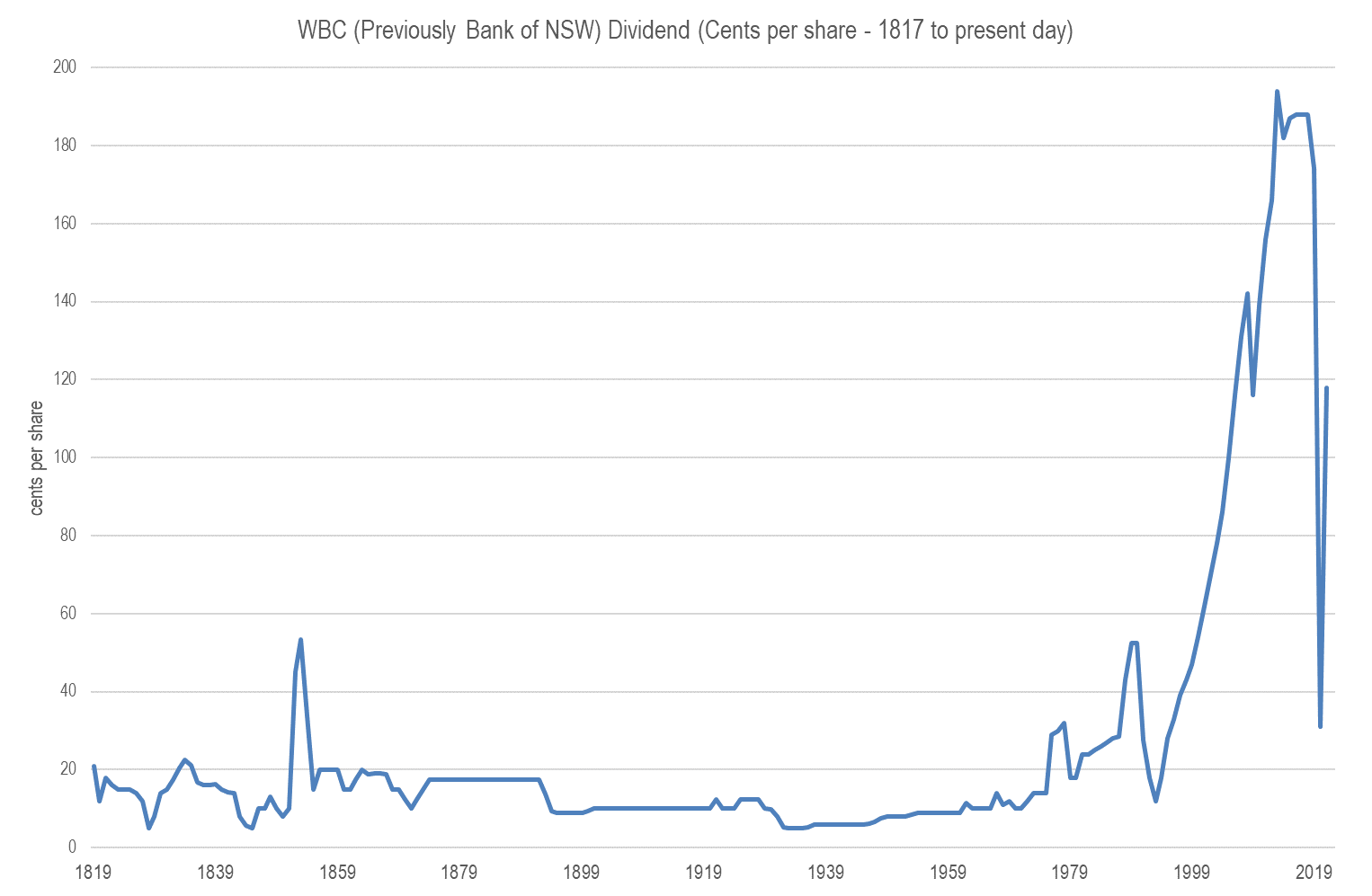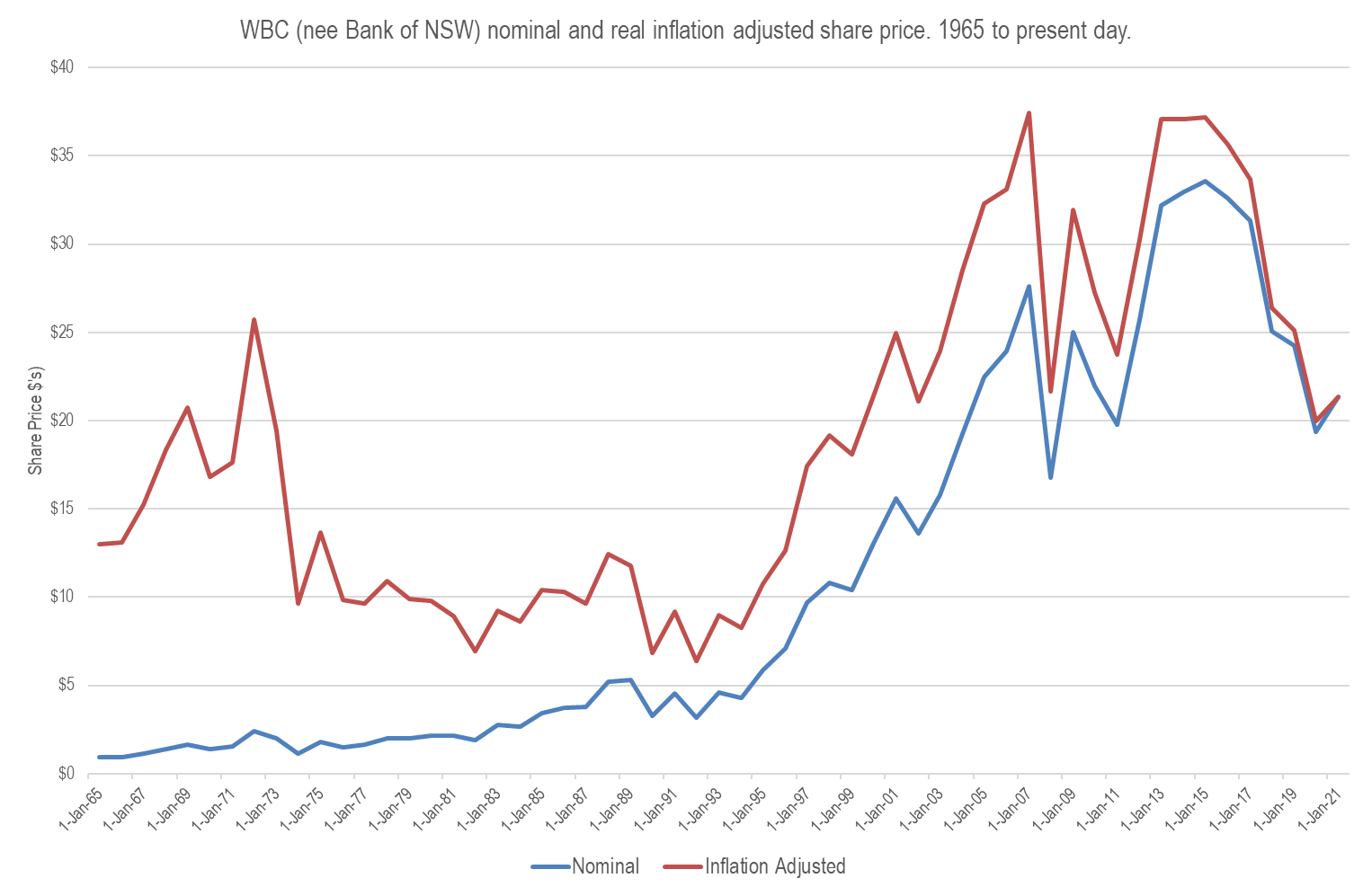Is the ASX home to the longest dividend-paying company in the world?
Australia holds lots of swimming world records, but not so many corporate ones. If, however, you rely on our research and googling capabilities, Westpac (ASX: WBC) (The Bank of NSW until 1982) may just be the longest dividend-paying company in the world (a special thanks to the good people at WBC Investor Relations for providing the data).

Since Westpac was established in 1817, it has not missed a dividend.
Not during the 1890s banking crisis when half the banking system shut its doors, not during the subsequent 1890s depression, nor during WW1 & WW2, nor during the Great Depression and not even when the bank was arguably insolvent during the aftermath of the 1990s recession.
You got paid in Spanish dollars in the mid-1820s (no idea why: we think it’s tied up in the currency shortage that led to the holey dollar (a coin minted with a hole in it!) created by Governor Macquarie and used by the eponymous bank as its symbol), but you got paid every year.
As hybrid investors, this information is really important. The two great risks for hybrid investors are not receiving distributions (but if the bank pays an ordinary dividend, it must pay the hybrid distributions) and if the bank dives further into trouble, APRA may declare it non-viable, in which case hybrids are converted to equity.
If, however, Basle bank regulations and hybrids had been around since 1817, as a hybrid security holder, you would have always received a distribution. And if a bank is paying a dividend, it is, ipso facto, viable. But it’s clear that even though banking hasn’t changed, the dynamics have. Dividends were pretty much flat or down for a century before exploding in the 1980s. Obviously, the 80s saw the “four-opoly” finally being able to (ab)use their market power and profits, and dividends took off.
We can see this in the chart below. We’ve charted WBC’s share price in nominal and inflation-adjusted terms.
We’ve only got share price data back to 1965, but from more googling, bank share prices prior to that were
lacklustre at best, partially caused by limits on profits, dividends and balance sheets.

Is this relevant going forward?
We think there are important aspects of bank culture that mean that it is. The Big 4 are, well, big. As a collective, they employ just about as many people as Tasmania has full-time workers; their revenue is over twice the size of Tasmania’s state product and around three-quarters of South Australia’s.
They’ve been around for centuries and have seen streams of governments and politicians come and go while they continue to do their “stuff”. Since the 1990s, they have done it reasonably safely. That’s why we would have loved to have been a fly on the wall when APRA demanded a dividend pause during COVID-19.
Imagine telling the current custodians of the Westpac empire (which predates every state except NSW and Tasmania) that they will be the first directors not to pay a dividend.
So, we think that ingrained survival instinct will mean that they will continue to run conservative institutions, and even if the big 4 do get into trouble, we think that dividends continue while the banks re-establish themselves.
5 topics
1 stock mentioned

